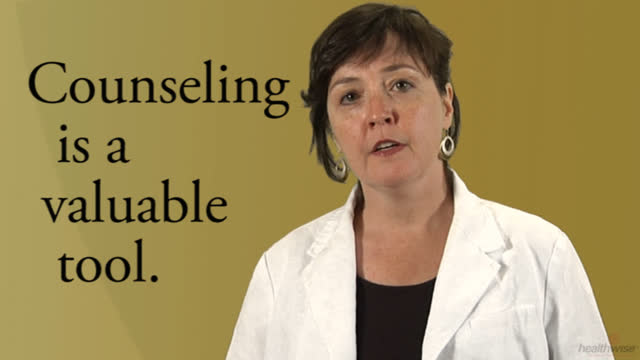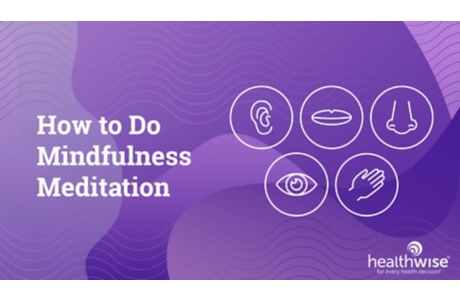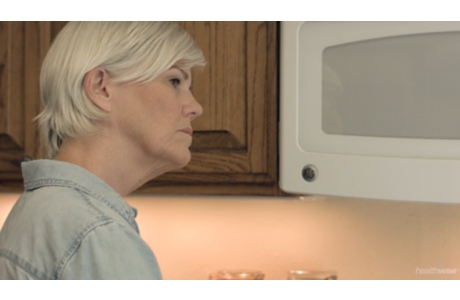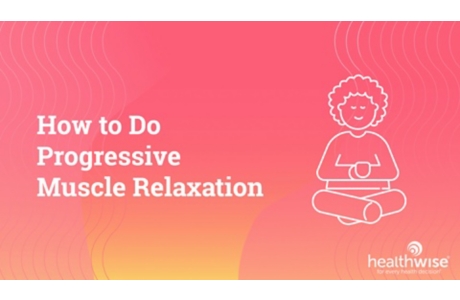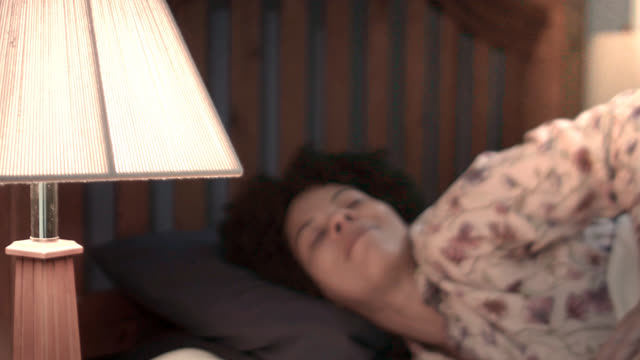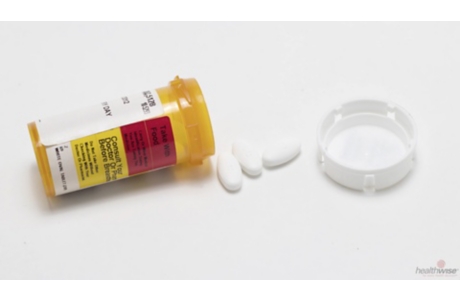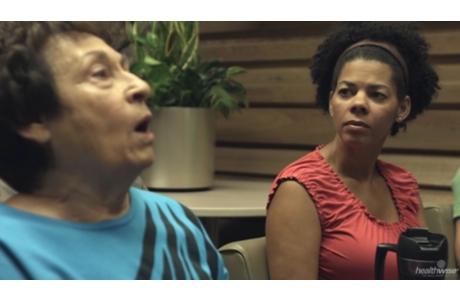Condition Basics
What is chronic pain?
Pain is your body's way of warning you that something may be wrong. Pain can affect your emotions as well as your body. When pain lasts longer than 3 months, it is called chronic pain.
Chronic pain can occur anywhere in your body. It can range from being mild and annoying to being so bad that it gets in the way of your daily activities.
Anyone can get chronic pain. It's more common in older adults, but it's not a normal part of aging. Older adults are more likely to have long-term medical problems, such as diabetes or arthritis, which can lead to ongoing pain.
What other problems can it cause?
Chronic pain can lead to other problems. You may feel depressed or feel anxious and stressed. You may stop doing activities such as going to work or school. You may not be able to sleep, and you may feel very tired.
What causes chronic pain?
Chronic pain can develop after a major injury or illness. It may also occur because certain brain chemicals aren't working correctly. Sometimes damaged nerves can cause the pain. Or the brain may become more sensitive to the feeling of pain or touch. Sometimes the cause of chronic pain isn't known.
How is it diagnosed?
Your doctor can find out if you have chronic pain by asking about your past illnesses and your overall health. Your doctor will also do a physical exam and look for areas that are tender, weak, or numb.
Your doctor may ask you about your pain including:
- When did your pain start?
- How long does your pain last?
- What makes your pain better or worse?
Your doctor may also want to know if your pain disrupts your daily activities, sleep, or mood.
You also may be asked to keep a pain diary.
You may have tests to find out if a health problem is causing the pain. Your doctor may check for problems with your nervous system and may order imaging tests.
How is chronic pain treated?
It's important to make a treatment plan with your doctor. It may take several types or combinations of treatments before you find relief.
There are many treatments you can try to manage your pain. Often people think of taking medicine to treat pain. But there are many non-medicine treatments that may be just as helpful.
Treatment options may include:
- Physical treatments. These can be things like physical therapy or massage.
- Behavioral health treatments. These are things like cognitive-behavioral therapy.
- Over-the-counter pain medicines. These include acetaminophen and ibuprofen.
- Other medicines. These are medicines like anticonvulsants or certain antidepressants that can help with chronic pain. Sometimes medicines you put on your skin may be used.
- Injections. Shots like a nerve block may be tried.
- Surgery. For example, spinal cord stimulation may be helpful.
- Going to a pain management clinic.
Health Tools
Health Tools help you make wise health decisions or take action to improve your health.
Cause
When you have an injury or illness, certain nerves send pain signals to your brain. With chronic pain, these pain signals keep going for weeks, months, or even years after you recover.
Chronic pain can develop after a major injury or illness, such as a back injury or shingles. Or it can happen without a known cause. It's also possible that certain brain chemicals that usually suppress pain stop working the way they're supposed to. Or the brain may become more sensitive to the feeling of pain or touch.
The cause of the pain may vary, depending on where it occurs. Pain can affect:
- Muscles, bones, and joints.
-
This pain can happen from injuries or muscle strain. Health problems like osteoarthritis, rheumatoid arthritis, and fibromyalgia also can cause it.
- Nerves and the nervous system.
-
This type of pain happens because of pressure on nerves or damage to them from an injury or a health problem. Sometimes pain occurs when something goes wrong with the central nervous system. This can happen with diabetes, shingles, and sciatica, for example.
- Organs.
-
Pain in your organs occurs because of injuries, infections, or health problems such as inflammatory bowel disease, irritable bowel syndrome, pelvic pain, and stomach ulcers.
You can have more than one kind of pain at the same time. For example, fibromyalgia can cause pain in muscles and nerves.
What Increases Your Risk
Risk factors are things that increase your chances of getting sick or having a problem. Risk factors for chronic pain include:
- Aging. Older adults are more likely to have certain health problems that can lead to chronic pain, such as arthritis, diabetes, and shingles.
- Lifestyle choices. These may include smoking, drinking alcohol, or using other drugs.
- Social factors. These may include loneliness and feeling disconnected from others.
- Long-term use of opioids.
- Certain health problems. These include:
- Existing health conditions, such as fibromyalgia, shingles, arthritis, depression or anxiety disorders, or phantom limb pain.
- Past health problems, such as joint injuries or past surgeries.
Prevention
Chronic pain can't always be prevented. But staying in good physical and mental health may be the best way to prevent it or help you cope with it.
Here are some things you can try.
- Treat your health problems early, including mental health conditions. Depression can make pain worse.
- Get enough sleep every night. Learn to alternate activity with rest throughout each day.
- Exercise.
- Eat a balanced diet.
- Try to reduce stress in your life.
- Get help for your pain early. If your doctor prescribes opioids for acute pain, take them for the shortest amount of time possible.
Learn more
Watch
Symptoms
Common symptoms of chronic pain include mild to very bad pain that does not go away as expected after an illness or injury. It may be shooting, burning, or aching. Or it may feel like an electrical shock. You may also feel sore, tight, or stiff.
Complications of chronic pain
Chronic pain can lead to other problems, such as:
- Fatigue. This extreme tiredness can cause impatience and a loss of motivation.
- Problems sleeping. This is often because the pain keeps you awake during the night. This can increase stress and make it hard to do simple tasks.
- Withdrawal from activity and more of a need to rest.
- Depression, which is common. It can make your pain worse.
- Other mood changes, such as feeling hopeless, scared, irritable, anxious, or stressed.
- Difficulty doing your daily activities. This may include not being able to go to work or school.
What Happens
Chronic pain may be mild to severe. It may come back from time to time over several weeks, months, or years. Or the pain may be constant.
When you have chronic pain, you may avoid activity because you worry about making your pain worse or injuring yourself again. Often being inactive leads to more pain. And it can make it harder to do your daily activities. This can increase your worries even more. But being more active may help with your pain.
Chronic pain can also lead to symptoms of depression and problems sleeping. And depression can make chronic pain worse and harder to treat. Treatment can help you manage other conditions that often come with chronic pain.
The lives of your family members, friends, or caregivers can also be affected. The people you count on to help you may also need some support. Family therapy or involvement in a caregiver support program may help.
When to Call a Doctor
Call 911 or other emergency services now if:
- You or someone you know is thinking seriously about or has attempted suicide. Serious signs include these thoughts:
- You have decided on how to kill yourself, such as with a weapon or medicines.
- You have set a time and place to do it.
- You think there is no other way to solve the problem or end the pain.
Where to get help 24 hours a day, 7 days a week
If you or someone you know talks about suicide, self-harm, a mental health crisis, a substance use crisis, or any other kind of emotional distress, get help right away. You can:
- Call the Suicide and Crisis Lifeline at 988.
- Call 1-800-273-TALK (1-800-273-8255).
- Text HOME to 741741 to access the Crisis Text Line.
Consider saving these numbers in your phone.
Go to 988lifeline.org for more information or to chat online.
Call a doctor about chronic pain if:
- Your pain has lasted more than 3 months without a clear reason.
- You are feeling sad or are losing interest in the activities or hobbies that you have enjoyed in the past. This may be a sign of depression, which is common with chronic pain.
- You are thinking about hurting yourself or others.
- You can't sleep because of the pain.
- You had an illness or injury that healed, but you still have pain.
- Your pain is severe or it interferes with your life. If you delay treatment, the pain may get worse.
Watchful waiting
Watchful waiting is a wait-and-see approach.
During this period of watchful waiting, your doctor may have you try to get more sleep, work on reducing stress, and get more exercise. If you can control pain with exercise, massage, and pain relievers, you may not need further treatment.
Who to see
If you have mild to moderate pain that keeps coming back and that you can't manage at home on your own, you may need to see one of the following health professionals:
- Family medicine physician
- Internist
- Nurse practitioner
- Physician assistant
- Osteopathic physician, a doctor who uses medicine, surgery, and other kinds of treatment but may also use manipulation or manual treatment
If your chronic pain is moderate to severe and is constant, or if treatment does not control the pain, you may need to see a specialist, such as one or more of the following:
Often more than one specialist will treat your chronic pain. For example, a primary physician may manage your medicines, and a physical therapist may help you restore function through exercise or other treatments. A professional counselor may help you with coping and depression. Someone else may help you with acupuncture or yoga.
Exams and Tests
Your doctor will take a detailed medical history. Your doctor will ask you questions about your overall health and past illnesses, surgeries, or injuries.
Your doctor may ask you about your pain, such as:
- When did your pain start?
- How long does your pain last?
- What makes your pain better or worse?
Your doctor may also want to know if your pain disrupts your daily activities, sleep, or mood.
You also may be asked to keep a pain diary.
In your physical exam, your doctor will look for areas that are tender, weak, or numb. The doctor will also check for health problems that can lead to chronic pain, such as nervous system problems.
Tests
One or more of these tests may help your doctor rule out health problems that can cause chronic pain. These tests may also help your doctor find the cause of your pain. They include:
- Blood tests or other lab tests.
-
A small sample of your blood is taken. It's then checked to see if you have an infection or other condition that could be causing your pain.
- Imaging tests.
-
X-rays or other imaging tests (such as CT scans, MRIs, or ultrasounds) take pictures of the inside structures of your body to look for disease and injury.
- Nerve tests.
-
Electromyogram (EMG), nerve conduction studies, and other nerve tests measure muscle and nerve function to find out if your chronic pain is related to muscle or nerve problems.
- Diagnostic nerve blocks.
-
One example of these types of nerve blocks is an injection of a local anesthetic near a nerve to find out if that nerve is causing the pain.
Learn more
Watch
Treatment Overview
Treating chronic pain can be challenging. And it may take several types or combinations of treatments before you find relief. The goals of treatment are to reduce your pain and help you be able to function.
It's important to build a clear treatment plan with your doctor. Part of this plan includes finding ways for you to manage your pain. Only you know how bad your pain is and how it affects your life. Be sure to ask your doctor if you aren't clear about what steps you can take when pain occurs or gets worse.
Be sure to seek treatment early. It may help prevent the pain from getting worse.
Treatment options
There are many treatments you can try to manage your pain. Often people think of taking medicine to treat pain. But there are many non-medicine treatments that may be just as helpful. They may include:
- Physical treatments. These can be things like physical therapy, massage, or heat or cold.
- Behavioral health treatments. These are things like cognitive-behavioral therapy (CBT) or mindfulness-based stress reduction (MBSR).
- Mind-body treatments. These may include relaxation exercises or yoga.
Your doctor may recommend these treatments with or without medicine.
You may be able to manage your pain with over-the-counter pain medicines such as acetaminophen or ibuprofen.
If over-the-counter medicines aren't enough, other treatments may be needed. They include:
- Medicines. These are medicines like anticonvulsants or certain antidepressants that can help with chronic pain. Sometimes medicines you put on your skin may be used.
- Injections. Shots like a nerve block or a joint injection may be tried.
- Surgery. For example, intrathecal drug delivery or spinal cord stimulation may be helpful.
If your chronic pain isn't relieved after you have tried numerous treatments, you may want to think about going to a pain management clinic. Treatment is provided by a team of doctors who work together to address all the things that may cause your chronic pain.
Learn more
Watch
Self-Care
You can care for yourself when you have chronic pain. Here are some things to try.
- Get enough sleep.
- Set a bedtime and a wake-up time—and stay with these times, even on weekends. This helps your body get used to a regular sleep time.
- Avoid taking naps, especially in the evening.
- Avoid drinking caffeine after 3 p.m. This includes coffee, tea, cola drinks, and chocolate.
- Get help for health conditions right away.
Treat medical conditions and mental health concerns early, before they get worse and become harder to treat. Chronic pain can lead to symptoms of depression. And depression can make chronic pain harder to treat.
- Stay active.
- Talk to your doctor before you begin an exercise program. Start slowly and increase your efforts bit by bit.
- Get regular aerobic exercise—such as swimming, stationary cycling, and walking—to build your strength and health. Water exercise may help with pain that gets worse during weight-bearing activities, such as walking.
- Schedule your day so that you are most active when you have the most energy. Learn to move in ways that are less likely to make your pain worse.
- If your joints are stiff, try taking a warm bath or shower first to loosen up. Also, do some stretching exercises each day.
- Practice healthy habits.
- Eat a balanced diet. Good nutrition will help you stay healthy and strong.
- Stop smoking. Smoking may affect your level of pain.
- Reduce stress. Try a relaxation therapy such as breathing exercises or meditation.
- Use tools that may help.
Assistive devices, such as walking canes or doorknob extenders, may help you do your daily activities. These devices can help you to be more mobile and independent.
- Try self massage.
With self-massage you can help relax your own back muscles using a tennis ball.
Learn more
Watch
Medicines
Medicines can often help control chronic pain. In some cases, it may take several weeks for the medicine to work.
Medicine may work best when it's used along with other types of treatment, such as physical therapy and counseling, to address the different causes of chronic pain.
Sometimes a medicine loses some or all of its ability to work when it is used daily over a long period of time. Your body forms a tolerance to it. If this happens, you may need to take more of the medicine, change medicines, or add another medicine. Your doctor can work with you to do this.
Pills for pain
You will likely start with medicines that cause the fewest side effects (such as acetaminophen). The dose will be increased, or the medicines will be changed as needed. Be safe with medicines. Read and follow all instructions on the label. Pills for pain include:
- Acetaminophen, such as Tylenol.
- Nonsteroidal anti-inflammatory drugs (NSAIDs), such as aspirin, ibuprofen (for example, Advil), and naproxen (for example, Aleve).
- Antidepressants, such as amitriptyline or duloxetine.
- Corticosteroids, such as prednisone.
- Anticonvulsants, such as gabapentin and pregabalin.
In some cases, an opioid pain medicine may be tried.
Medicines you put on your skin
A variety of creams, gels, sprays, and patches may be used to relieve chronic pain. These include:
- Topical analgesics.
-
These are pain relievers that you apply directly to the skin. Examples include some forms of nonsterodial anti-inflammatory drugs and lidocaine. Some may contain capsaicin.
- Cooling spray.
-
One example is Biofreeze. You spray it directly on the skin. This may be repeated several times.
Injections
Injected medicines—shots—may be used to treat chronic pain. These include:
- Epidural steroid injections.
-
Steroids are injected around the spine.
- Joint injections.
-
A corticosteroid is injected into the painful joint or joints.
Learn more
Watch
Surgery
Surgery for chronic pain isn't common. It's usually an option only after other treatments haven't worked or if it's thought to be medically necessary.
Surgery may provide pain relief. But it also may permanently make you less able to feel other sensations, such as light touch and temperature changes. It can also cause a different pain to occur.
Implanted pain control systems involve inserting devices under your skin or elsewhere in your body. For example, intrathecal drug delivery sends medicine to the area of your pain.
Other procedures include:
- Electrical nerve stimulation. It uses electric current to interrupt pain signals.
- Nerve ablation. It destroys or removes the nerves that are sending pain signals.
- Decompression. This is a type of surgery used for nerve pain, such as from trigeminal neuralgia. The doctor tries to move away blood vessels or other body structures that are pressing on nerves and causing pain.
Learn more
Other Treatment
Physical treatments can be an important part of managing chronic pain. You may find that combining more than one treatment helps the most.
These treatments can include:
- Heat or cold. This can help arthritis, sore muscles, and other aches.
- Hydrotherapy. It uses flowing water to relax muscles.
- Massage. Massage involves rubbing the soft tissues of the body. It eases tension and pain.
- Transcutaneous electrical nerve stimulation (TENS). This treatment uses a gentle electric current applied to the skin for pain relief.
- Acupuncture. This is a form of traditional Chinese medicine. It uses very thin needles inserted into certain points of the body.
- Physical therapy. This treatment uses stretches and exercises to reduce pain and help you move better.
If you get physical therapy, make sure to do any home exercises or stretching your therapist has prescribed. Stay as active as you can. Try to get some physical activity every day.
Complementary treatments
You can manage chronic pain by using things other than medicines or physical treatments. For example, you can keep track of your pain in a pain diary. It can help you understand how the things you do affect your pain.
Reducing stress and tension can reduce pain. And being more aware of your thought patterns can be helpful. In some cases, shifting how you think about pain can affect how you feel.
Here are some options to think about:
- Breathing exercises and meditation. These techniques can help you focus your attention, relax, and get rid of tension.
- Guided imagery. This is a series of thoughts and images that can focus your attention away from your pain.
- Hypnosis. It's a state of focused concentration that makes you less aware of your surroundings.
- Cognitive behavioral therapy. This type of counseling helps you change your thought patterns.
- Yoga. Stretching and exercises can reduce stress and improve flexibility.
If what you're doing to control your pain isn't working, or if you're feeling depressed, talk to your doctor. He or she can help you change your pain management plan and find resources for emotional support.
Learn more
Watch
Related Information
- Back Problems and Injuries
- Cancer Pain
- Chronic Myofascial Pain
- Chronic Pelvic Pain
- Complementary Medicine
- Complex Regional Pain Syndrome
- Depression
- Diabetic Neuropathy
- Feeling Depressed
- Fibromyalgia
- Headaches
- Low Back Pain
- Lumbar Herniated Disc
- Migraine Headaches
- Neck Pain
- Osteoarthritis
- Pain Management
- Shingles
- Temporomandibular Disorders (TMD)
Credits
Current as of: July 10, 2023
Author: Healthwise Staff
Clinical Review Board
All Healthwise education is reviewed by a team that includes physicians, nurses, advanced practitioners, registered dieticians, and other healthcare professionals.
Current as of: July 10, 2023
Author: Healthwise Staff
Clinical Review Board
All Healthwise education is reviewed by a team that includes physicians, nurses, advanced practitioners, registered dieticians, and other healthcare professionals.

